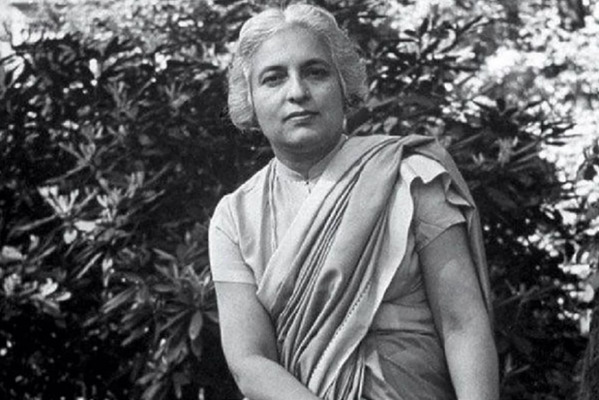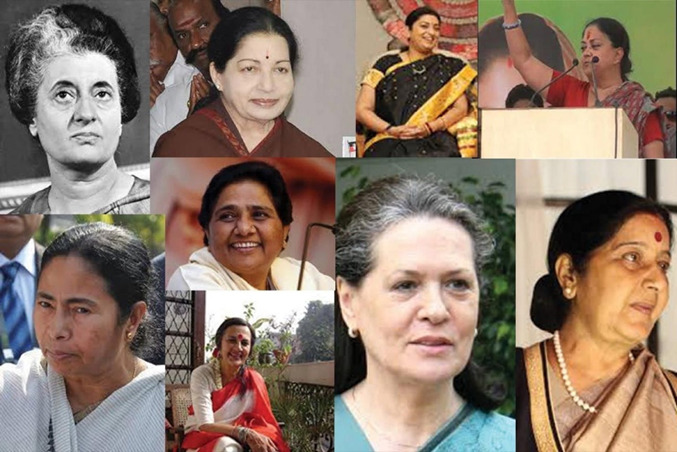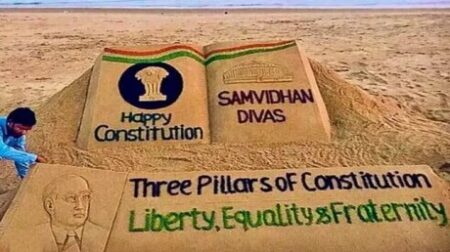Historically speaking women have been marginalised in more ways than one. However, with the rise of feminist movements all over the world, they have achieved breaking the glass ceiling in several predominantly “male” professions. Politics is one of them.
Women in Indian Politics: Before 1947
Pre-Independence the involvement of women in the fight for freedom was huge on ground level. They led protests, some violent and others non-violent. Sarojini Naidu, Kasturba Gandhi, Pritilata Waddedar, and Rani Lakshmibai are just some of them. The contributions of women in the Indian freedom struggle ranged from social activism to military and political leadership.
Women like Vijaya Lakshmi Pandit, who fought tirelessly for independence, went on to serve as the President of the United Nations General Assembly. Kamla Chattopadhyay was another leader who after independence became a part of the Constituent Assembly.

Vijaya Lakshmi Pandit
Source: woodenstreet.com
Women in Indian Politics: After 1947
Post-Independence, with Universal Adult Suffrage, the number of women casting votes has indefinitely increased but the same can’t be said about the number of women contesting for elections. In the first Lok Sabha elections the percentage of women MPs was 4.50%. In the last 75 years of independence, the number has increased to nearly 14%. When it comes to the representation of women in politics, India ranks below its neighboring countries i.e., Pakistan, Bangladesh, and Nepal.
Indira Gandhi, the first female Prime Minister of our country was one of the first to break the glass ceiling. Her tenure was a bit rocky, to say the least, but it still marked a very important phase in Indian Politics. Although we’ve had female Presidents in the past, Indira Gandhi is the one and only female Prime Minister India has had in its 75 years of independence.
However, several female politicians have triumphed and remained in leadership positions to date. Mamta Banerjee dethroned a 34-year-old government and now is the Chief Minister of Bengal. Sonia Gandhi has been the longest President of the Congress Party and a former leader of the opposition party.
Mayawati, part of the Bahujan Samaj Party was the former Chief Minister of Uttar Pradesh. She is one of the most powerful Dalit leaders in the country right now.
Jayalalitha (former CM of Tamil Nadu) and Sushma Swaraj (former Union Minister of External Affairs of India) are also some big names who have been exceptional leaders and proof that women can achieve great things if they’re allowed to do so.

Source: Entrepreneur
In politics, there are several reasons why women don’t contest elections. From the lack of opportunities, education, violence, and hate, multiple roadblocks deter a woman from participating in the elections. Despite the reservation given to women in the parliament and local governing authorities, the inclusion of women remains stagnant. Women who do go ahead and stand for elections are met with harsh consequences. They receive hate online and offline. They are constantly undermined and their ideas are not given as much importance as the others. There have also been preconceived notions that women don’t do well as leaders and hence parties don’t give them tickets because ultimately, they care for the votes of the majority.
The gender gap in this country has been very apparent since the very beginning. It all boils down to the patriarchal setup of the country. Women have been discouraged from entering the working industry time and again due to the traditional roles that have been assigned to them. They have been tied to domestic chores and nurturing kids. When the mindset changes and more opportunities are given to women to grow, then, will we see major changes.













